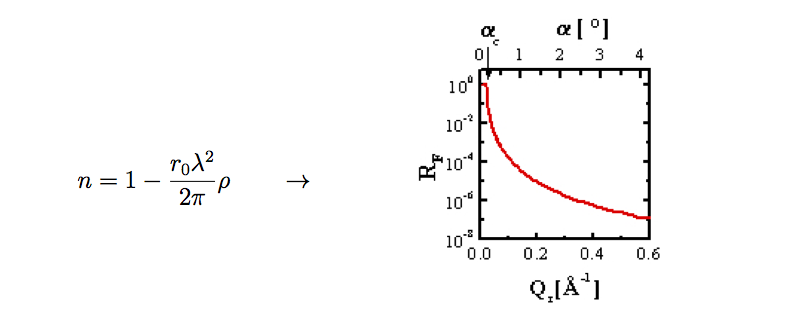X-ray Reflectivity
Optics with X-rays
The energy of x-rays is much larger than the energy needed for ionisation of light elements. Thus one can describe the interaction of x-ray radiation with matter with the Drude theory of the free electron gas and the reflexion of x-rays by the classical Fresnel reflectiviy of interfaces between media with different index of refraction. Since the frequency of x-ray is much larger than the plasma frequency one gets a simple equation describing the index of refraction:
An index of refraction smaller than one leads to total external reflexion at angles lower than the critical angle ac. The Fresnel reflectivity RF of a simple interface decreases strongly at angles a larger than the critcal angle RF ~ (ac/2a)4. Therefore it is usual to normalize the reflectivity R a complex layer by the Fresnel reflectivity of an idealized smooth interface.
Measuring Setup
X-ray reflexion of thin films on solid support as well as of Langmuir monolayers at the air water interface is measured at incident angles between 0.1° and 5°. This leads to a variation of the horizontal wave vector transfer of 0.01 up to 0.65Å-1. Liquid interfaces cannot be tilted and should not be moved (excitation of waves), so in our setup the sample (i.e. the langmuir trough) is fixed. Angle of incidence and of evanescence are determined by tilting and lifting of two slit systems S1 & S2 and S3 & S4. In front of the detector Cu Ka radiation is selected by a graphite crystal and a monochromator slit S5.
The normalized reflexion is some kind of fourier transform of the electron density (the absolute square of its first deriative, to be exact). Yet taking the absolute square, all phase information ist lost and a retransformation is impossible- problem of inversion. So one has to guess a model of the system and to adjust its parameters, until the calcultated reflexion matches the measured.




